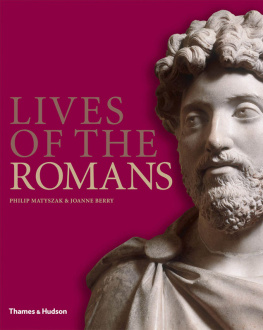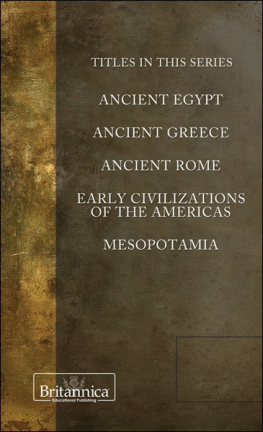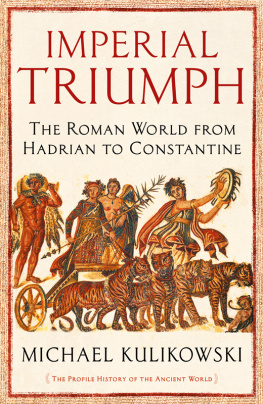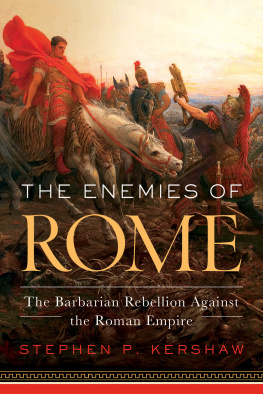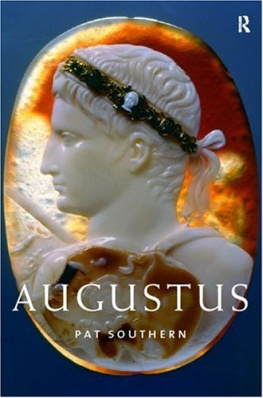The story of Romes origins is a tangled skein of fact and nonsense over which scholars have endlessly squabbled. Even Livy, writing 2,000 years ago, remarked, the old tales appear more attractive as ballads than solid historical record. Like Livy, we can neither confirm nor refute the legends, but if Faustulus did not exist, then we can be certain that people much like him lived on the seven hills just before Rome was founded.
Faustulus was a shepherd, allegedly the royal herdsman for the nearby city of Alba Longa. He was an Arcadian, descended Greeks who had settled in the area and merged with the indigenous Latin peoples. We know from archaeological research into the beginnings of Rome that there were communities living in crude huts on the hills; probably shepherds who descended to the valleys in daytime to tend to their flocks. At this time the valley of the Roman Forum was a marshy bog, frequently filled by flooding from the river Tiber.
After one such inundation of the valley, some time in the early 8th century BC, Faustulus came upon an amazing sight. As he made his way down the Palatine Hill, he saw a she-wolf licking the mud-spattered bodies of twin baby boys, who had been spilled from a richly decorated basket that had been left tangled in the branches of a fig tree by the receding floodwaters. The she-wolf had recently whelped, and she had relieved the pressure on her dugs by feeding the children with her milk. In some versions of the tale, Faustulus was alone when he found the twins, in others he was with a group of fellow shepherds. He had a reputation as a solid citizen, and after discussion the other shepherds agreed to allow him to take the twins for his wife to rear, since one of her own children had recently died. Legend claims that the twins were the children of a princess and Mars, the god of war (to whom, incidentally, wolves were sacred). They had been jettisoned into the Tiber through political scheming by an evil king. The sad reality is that what one historian has rather brutally called post-natal contraception was commonplace in the ancient world, and unwanted children were frequently abandoned to the mercy of passing strangers, or indeed, wild animals.
Faustulus wife was Acca Laurentina (akka is mother in Sanskrit, an ancestral relative of Latin). According to one ancient writer, Aulus Gellius, she was worthy of that accolade as she had 11 other sons. Another writer, Dio of Halicarnassus, comments that Acca Laurentina might have been the she-wolf of the legend. Having formerly prostituted her beauty, she had been nicknamed lupa, the she-wolf. Romans of later generations told both versions of the story, and proudly pointed out the fig tree where the twins were found, and an ancient hut of the type in which the twins were reared. With Romulus and Remus (as the boys were named) the other children of Laurentina formed a band of brothers that was frequently claimed throughout history as the origin of an elite priesthood called the Arval Brethren.
When Faustulus told Romulus and Remus of their royal origins, they lived up to their hero status and deposed the evil king, restoring truth and justice in Alba Longa, the city of their birth. Then they returned to the Palatine with a host of followers and the intention of founding a city. However, the brothers fell out, with supporters of one brother wanting to found the city of Reme on the Aventine Hill, and the others wanting Rome on the Palatine. The dispute became ugly, and as fighting broke out, Faustulus threw himself between the warring factions, distraught at the thought that one of his adopted sons might die. He was killed in the fighting, and his sacrifice was in vain. Remus was killed by some accounts slain personally by his brother. Romulus went on to found his city, but Faustulus was not forgotten. Later generations believed that a stone lion in the Forum marked his tomb. The Faustulus name lived on in a branch of the Pompeia clan in Rome, one of whom honoured his alleged ancestor on a handsome silver coin, depicting him with the twins and the she-wolf.
Titus Tatius, like Romulus, was a figure of legend, but the Romans used his story to explain a historical fact the growth of Rome through the fusion of two different peoples, the Romans and the Sabines.
By offering asylum to any man who would make Rome his home, Romulus peopled his new city with criminals and outcasts in the 8th century BC. Rome grew rapidly in both size and influence, much to the alarm of its neighbours. But they consoled themselves with the belief that this upstart power would last only a single generation for there were no women in the new city, and thus no threat of future generations of Romans. Despite Romulus entreaties the nearby cities refused to grant the right of intermarriage, and so the Romans were forced to desperate measures. Romulus organized a festival and games in honour of Neptune, and his neighbours were enthusiastic in their attendance, curious about the new city. Among them were the Sabines with their wives and families. As the Sabines were distracted by the games, the Roman youth abducted their womenfolk and forced them into marriage.
What were the Sabine fathers to do? How could they wage war on their sons-in-law, particularly since their daughters had swiftly grown to like their new husbands and their new honoured status in Rome? How could they accept the insult paid to them by the Romans? The desire for revenge triumphed over newly established ties of kinship. The outraged fathers appealed to Titus Tatius, the powerful king of the Sabine city of Cures, to lead them against Rome, and he was appointed general of the combined Sabine forces.
Yet Tatius did not move against Rome as quickly as some of the fathers had expected, and a few of them rashly attacked Roman territory without him. Romulus promptly defeated them; but, listening to the pleas of the stolen women, granted them Roman citizenship. Many of the fathers moved to Rome to be near their daughters.
Finally Tatius was ready to act against Rome, and Romulus met a worthy opponent. Tatius did not act hastily, but with purpose and deceit. Romans would later tell different versions of the story, but all with the same outcome: Tarpeia, the daughter of the commander of the Roman citadel, opened the gates of Rome to the Sabines. She may have been in love with Tatius and allowed herself to believe that he would marry her, or she may have intended to betray the Sabines to Romulus. The least flattering version claims that she wanted the bracelets and rings worn by the Sabine warriors, and demanded from them what they had on their shield-arms in payment for her treachery. Her comeuppance was swift: once inside the citadel the Sabines crushed her beneath their shields, Tatius giving no honour to crime.
Inside the city, the Sabines squared off against the Romans and the ensuing battle was brutal. It was halted only by the Sabine women, who flung themselves between their fathers and their new husbands. As Livy records; Silence fell and not a man moved. A moment later the rival captains stepped forward to conclude a peace. Indeed, they went further: the two states were united under a single government, with Rome as the seat of power.
Romulus and Tatius became joint kings of Rome, and while individual citizens of Rome were still called Romans, collectively the people of Rome became known as the Quirites, in honour of the Sabine city of Cures. The end result was that Rome doubled in size. Three centuries of knights were created. They were named the Ramnenses after Romulus, the Titienses after Tatius, and the Luceres, possibly after Lucumo (an Etruscan warrior who aided Romulus). One of Tatius acts was also to divide the land they had conquered between Romes citizens. Recognizing the warlike spirit of the Romans, he hoped that farming would promote a love of peace among them.

